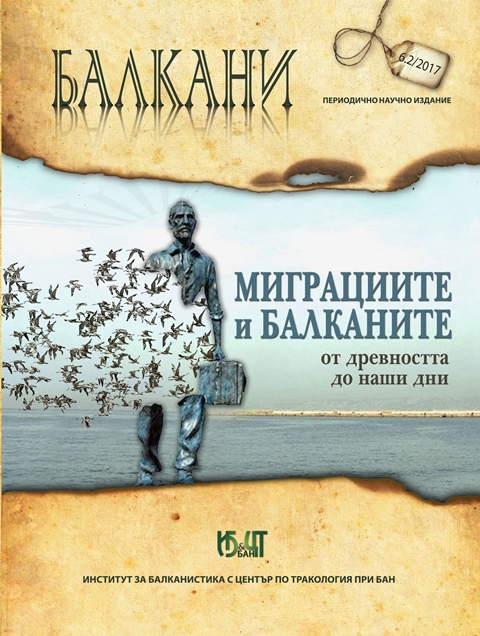БЪЛГАРИТЕ В ГЮМЮРДЖИНСКА ОКОЛИЯ: МОБИЛНОСТ/ИМОБИЛНОСТ, НАЦИОНАЛНА ИДЕНТИЧНОСТ, ФОРМИ НА ОБМЕН (КРАЯ НА ХІХ – НАЧАЛОТО НА ХХ В.)
THE BULGARIANS IN THE GUMURDGINA DISTRICT: MOBILITY/IMMOBILITY, NATIONAL IDENTITY, MEANS OF EXCHANGE (END OF 19TH – BEGINNING OF 20TH CENTURY)
Author(s): Maria MarkovaSubject(s): History, Social Sciences, Sociology, Local History / Microhistory, Social history, Modern Age, Recent History (1900 till today), Special Historiographies:, Social development, Family and social welfare, Demography and human biology, Rural and urban sociology, Economic development, 19th Century, Pre-WW I & WW I (1900 -1919), The Ottoman Empire, Migration Studies, Ethnic Minorities Studies, Identity of Collectives
Published by: Институт за балканистика с Център по тракология - Българска академия на науките
Keywords: Bulgarians in the Gumurdgina District; mobility/immobility; means of exchange; national identity;
Summary/Abstract: This article strives to demonstrate some of the aspects of Bulgarians’ lives in the indicated district and time period. Their local living lifestyle has been partially examined through the connection between the mobility/immobility of the people, the three forms of exchange of goods between the communities (work, marriage and education) and the national identity.There is a symbiotic connection between the mobile and the immobile population. Periodically, part of the people who are led by material reasons, social hierarchy, exogamy, matrilocalism of the marriage etc., begin to self-identify as Greeks. The rest of the community is self-identified by their Bulgarianism. During the last quarter of 19th century, the ethnical origin still does not limit the diverse individual statuses and roles. By the time of the Balkan war declaring the national identity transforms into a means for (re)defining and updating the internal and the external borders between these groups of Bulgarians, including their relations with the rest of the population within the region.
Journal: БАЛКАНИ
- Issue Year: 6/2017
- Issue No: 2
- Page Range: 61-70
- Page Count: 10
- Language: Bulgarian

